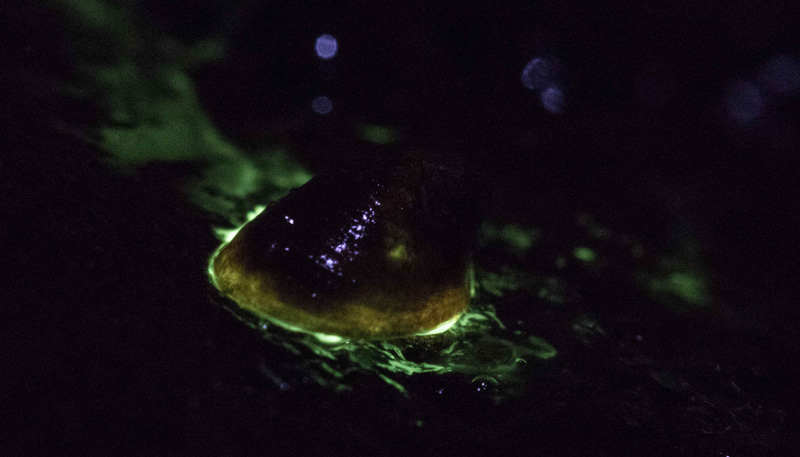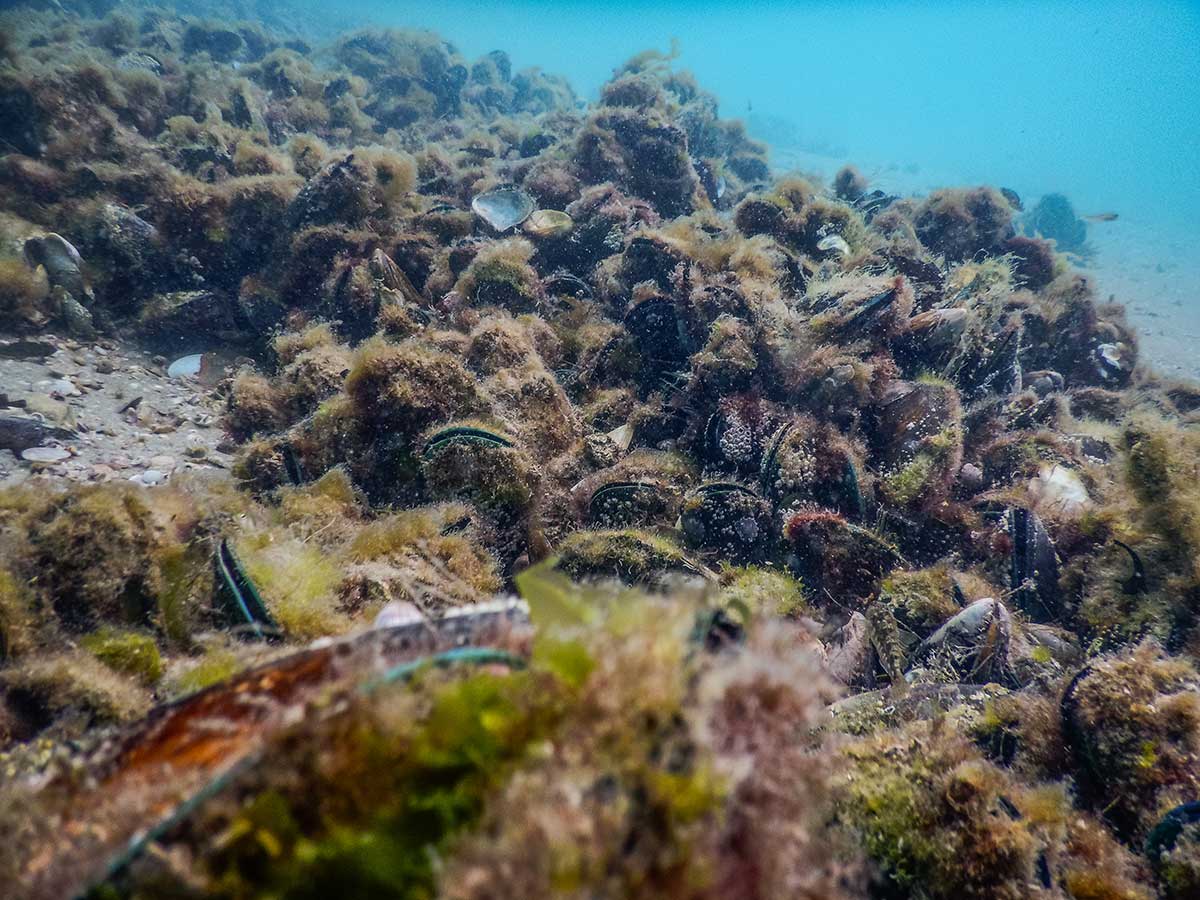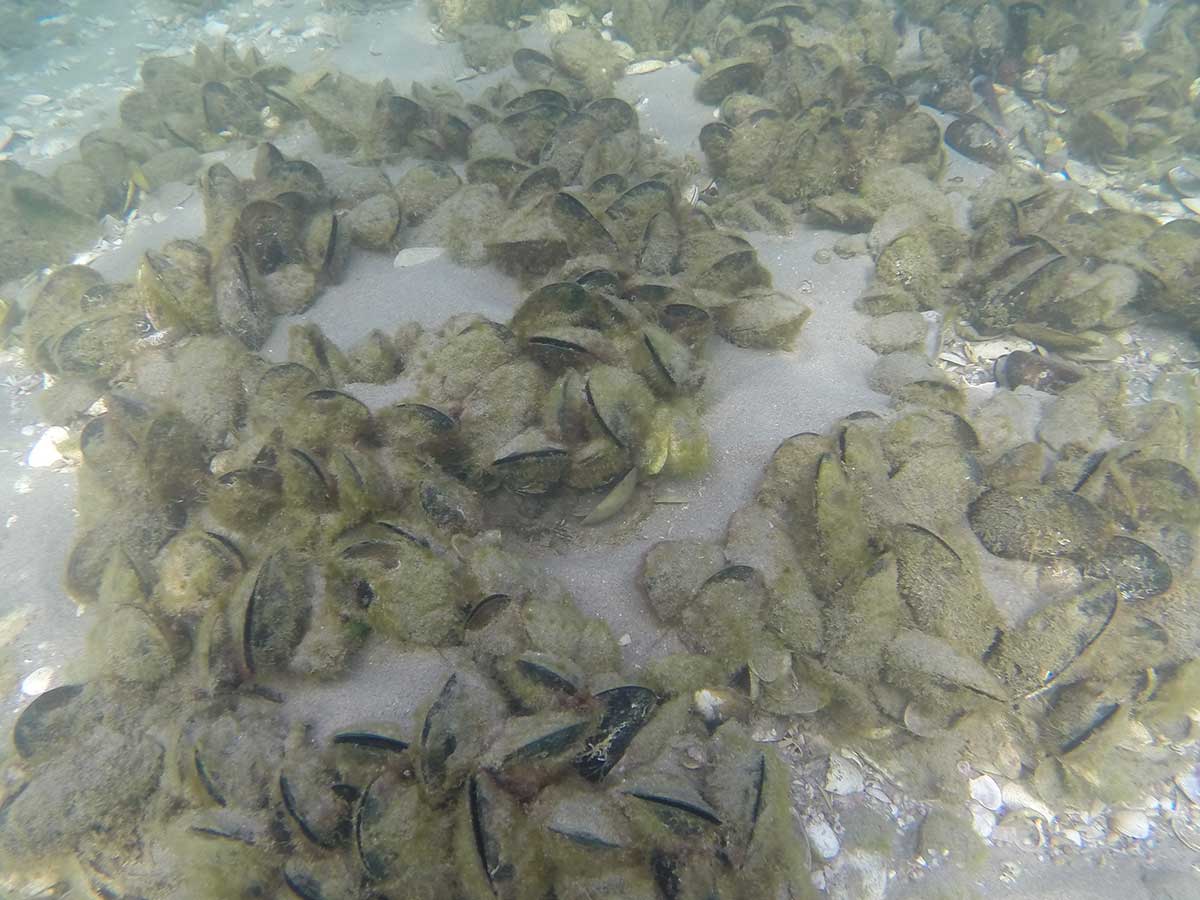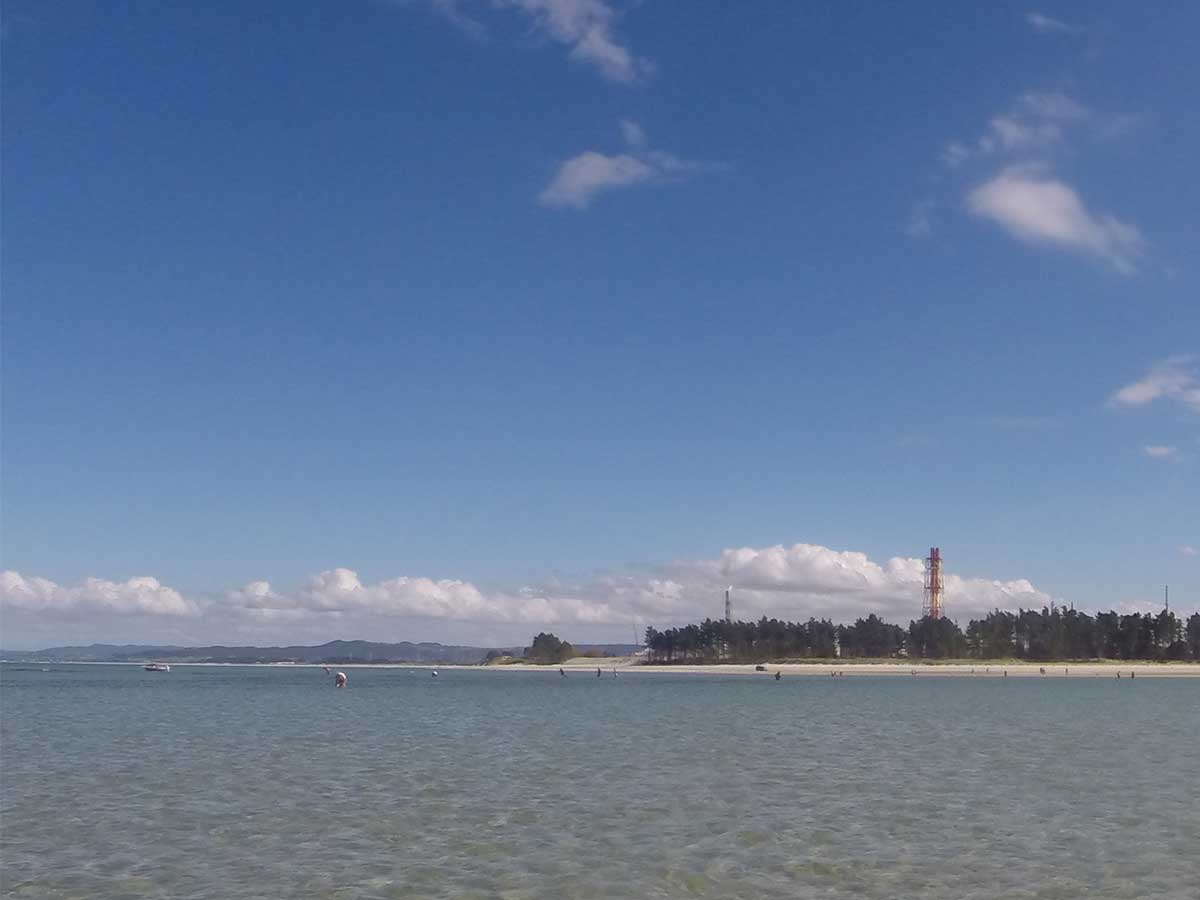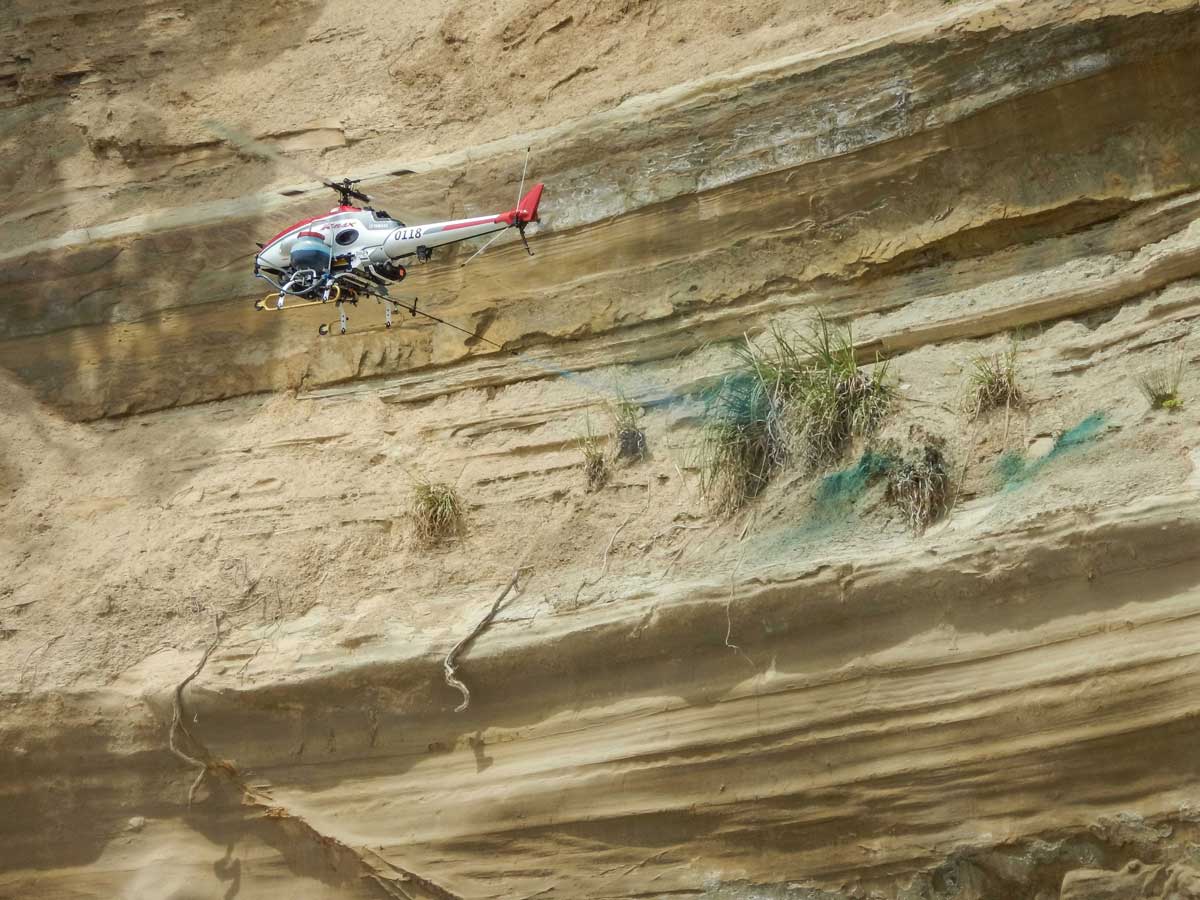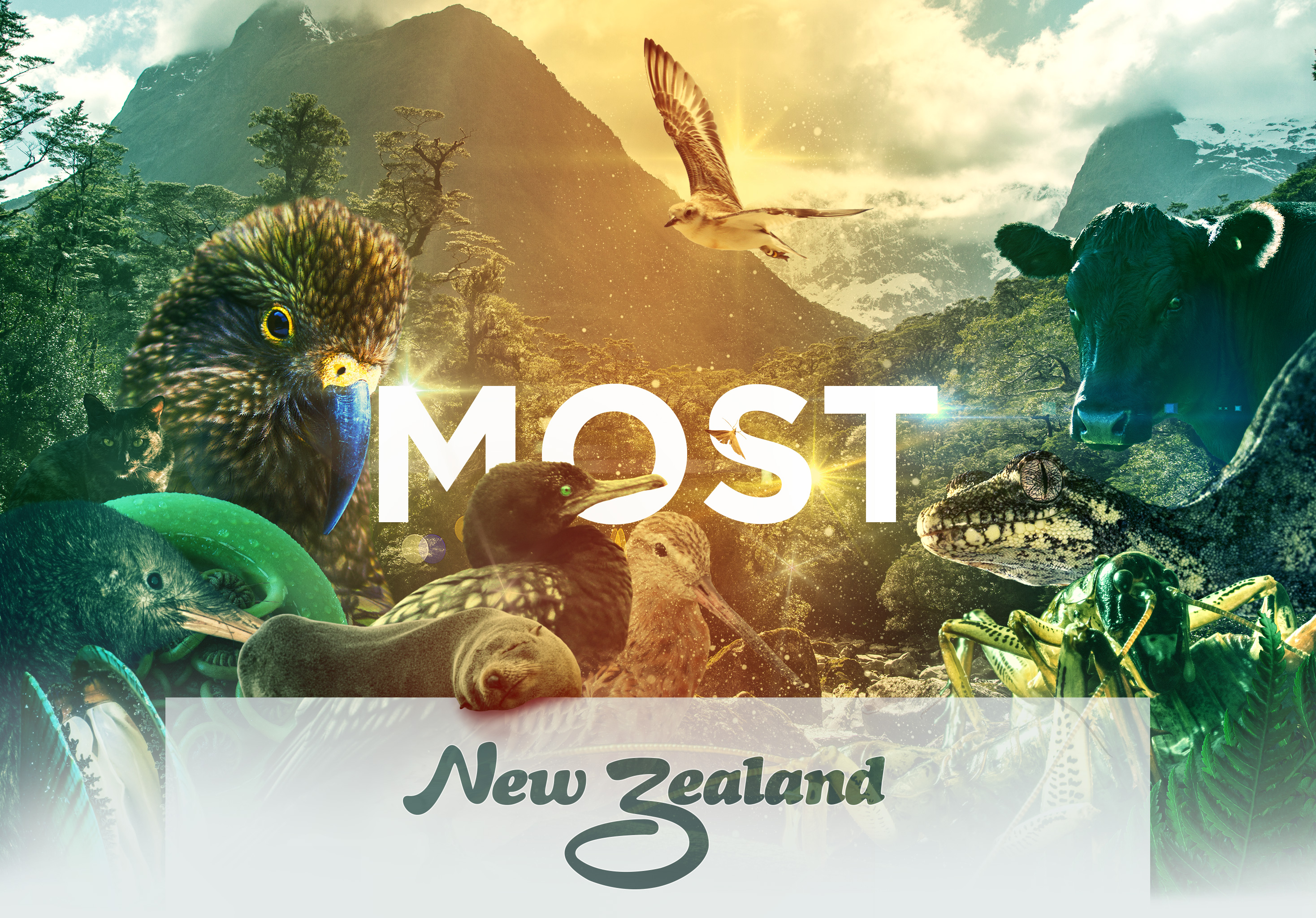http://www.huffingtonpost.com/jasmijn-de-boo/new-zealands-dirty-dairy_b_14717214.html
Natural mussel recruitment
After more than half a century Green Lipped mussels have not returned to the soft seafloor of the Hauraki Gulf. However only 100km north at the mouth of the Whangarei Harbour something magic happened. Out of nowhere a huge bed of mussels appeared. I was slow to document it but here are some photos by Dr. Mary A. Sewell in April 2016.
The bed was quickly consumed. Locals could park their cars a few meters from the beds. There were reports of people turning up with wheel barrows and of cars and boats being confiscated for those who exceeded their limits. The beds have now been decimated, (An MPI officer thinks the beds did not disappear but were greatly reduced in their first season, I did not find the original bed on my first trip). I turned up eight months later at low tide and followed some locals to the remaining beds. They looked like this:
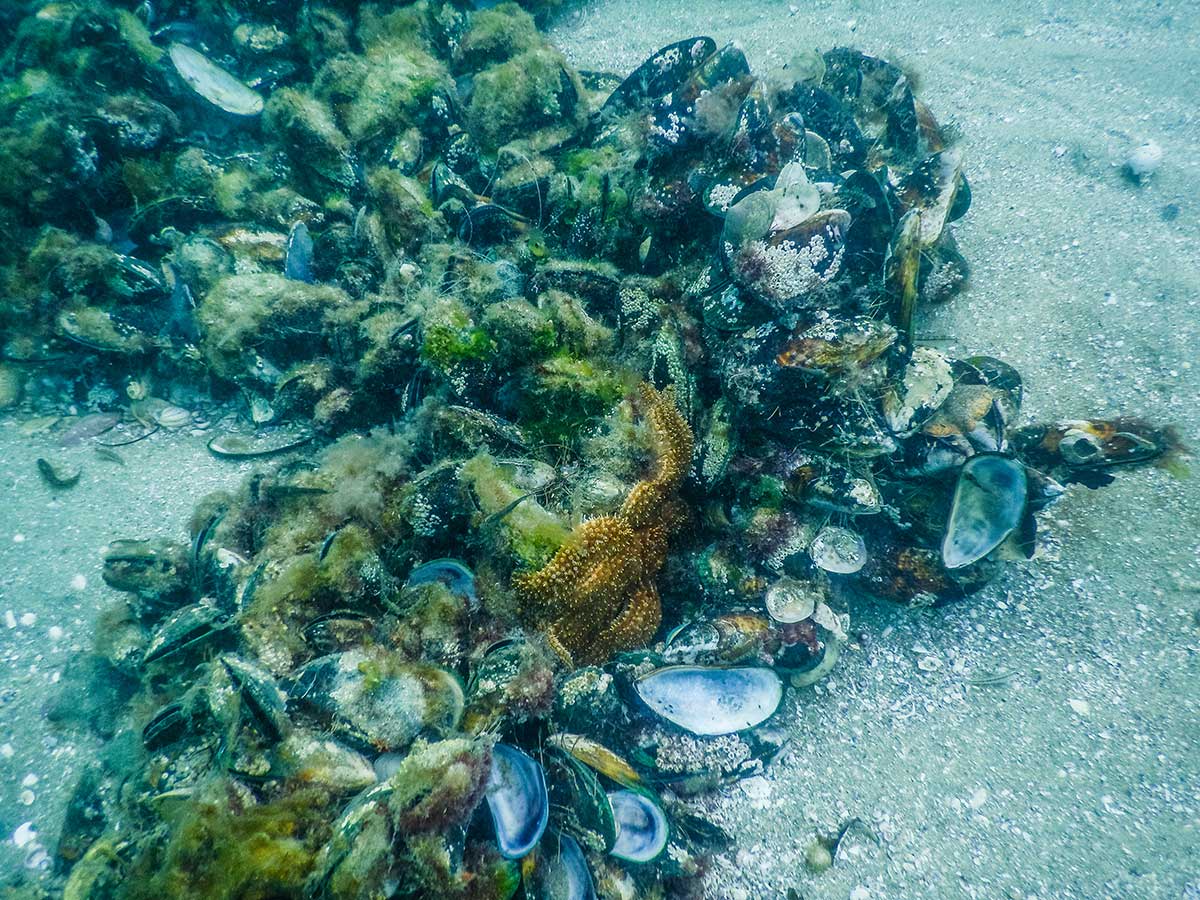
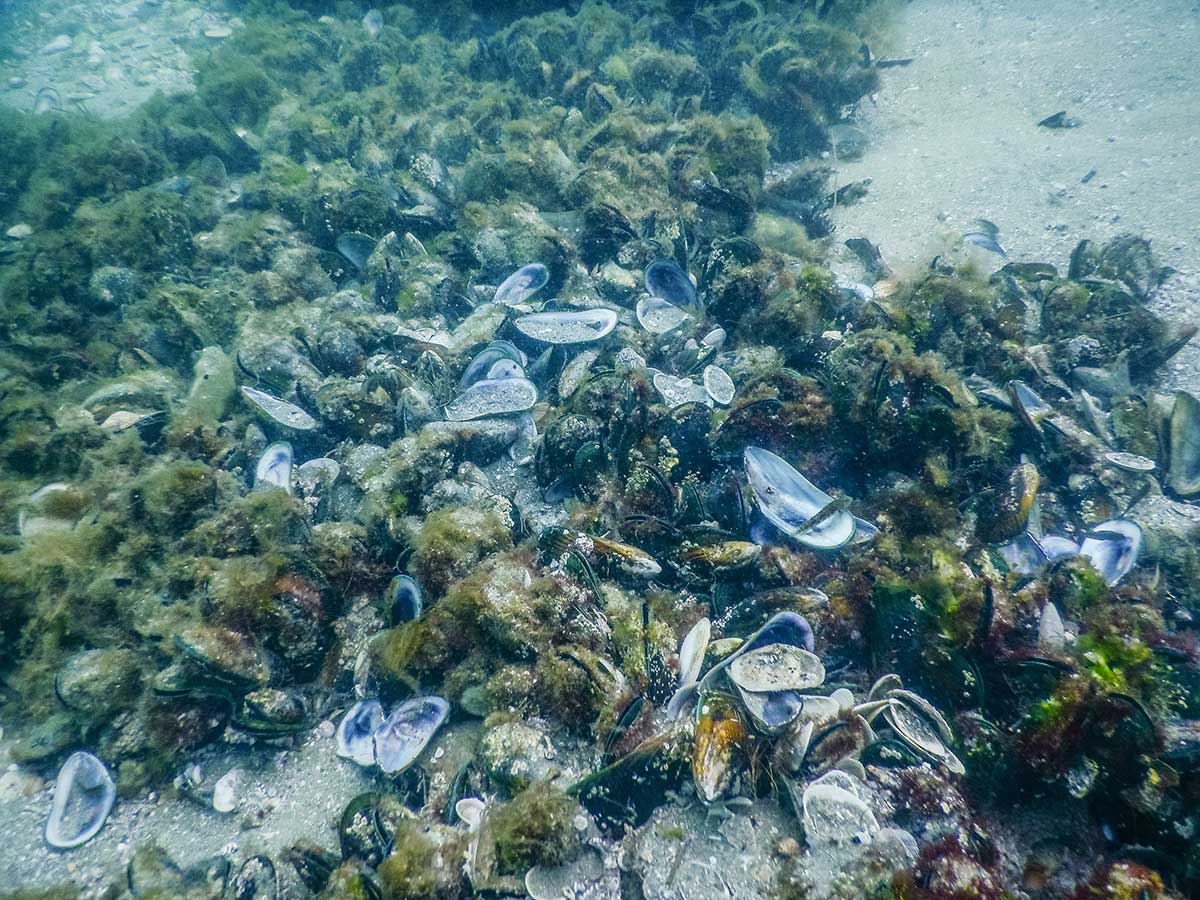
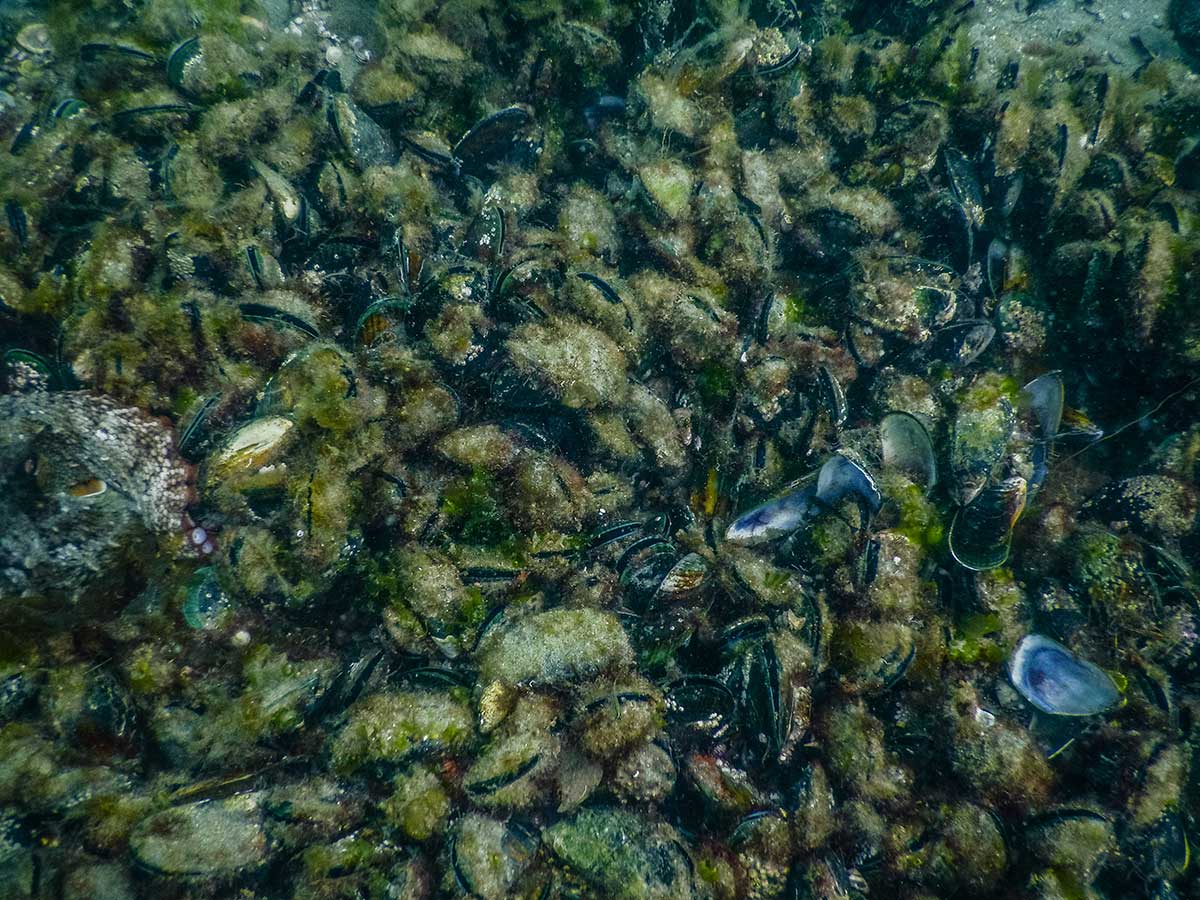
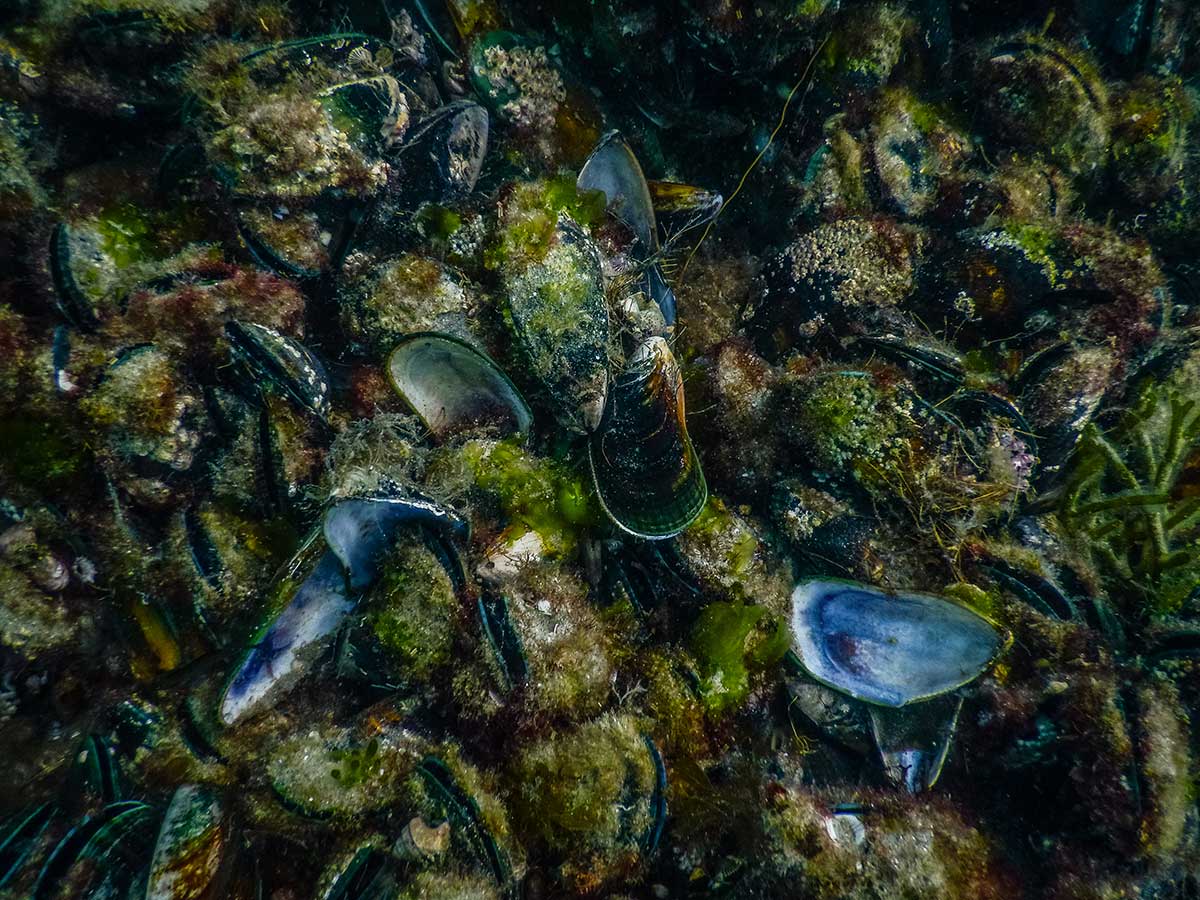
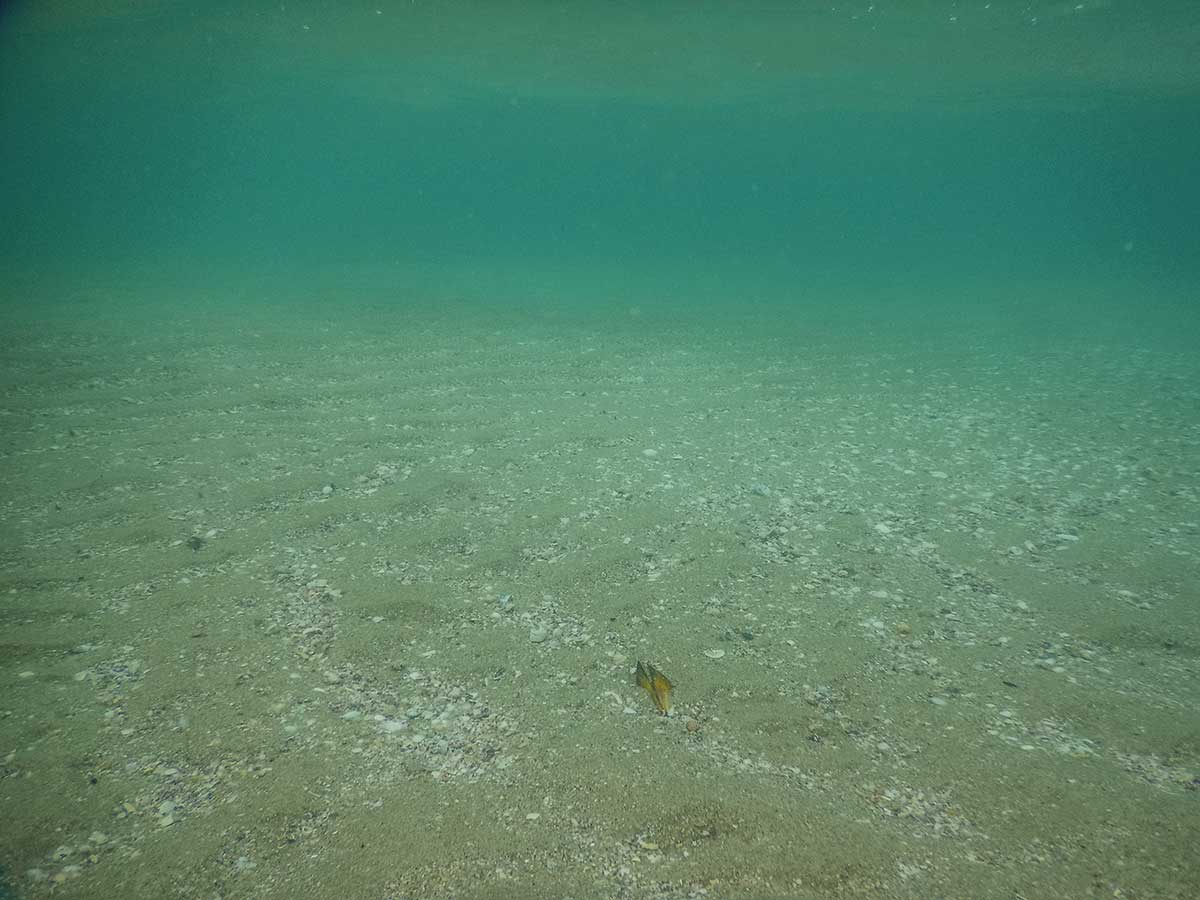
The remaining bed ran along the edge of the drop off about 4m at low tide and supported a wide range of marine life. On my way back to the beach I wondered what conditions bought about this beautiful natural phenomena? There may well have been sufficient spat from mussels growing on the refinery wharf, but did a closure of the cockle beds promote natural the recovery? Could the neighbouring marine reserve have played a part? Was this a once off or part of the recovery of the Whangarei harbour since the Firth cement works has cleaned up its act? Then I spotted these:
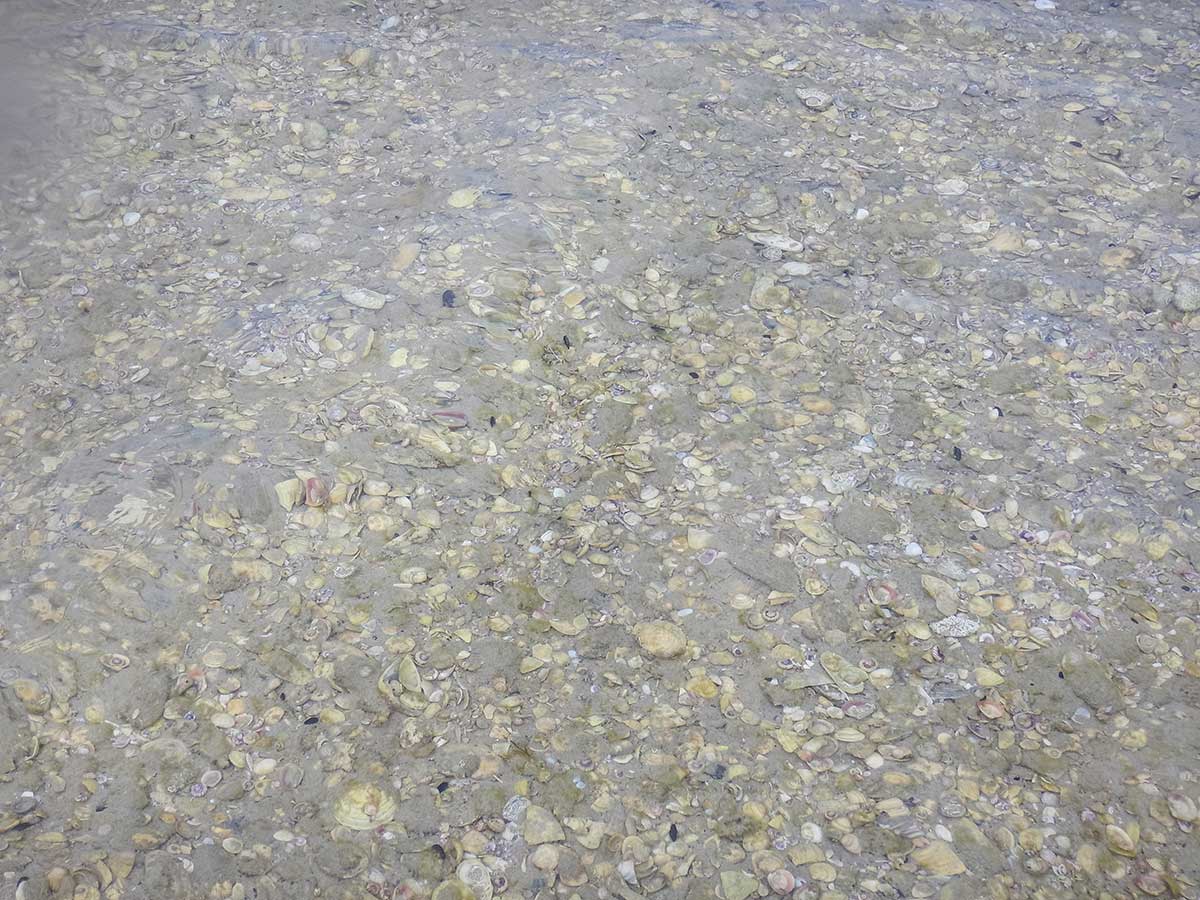
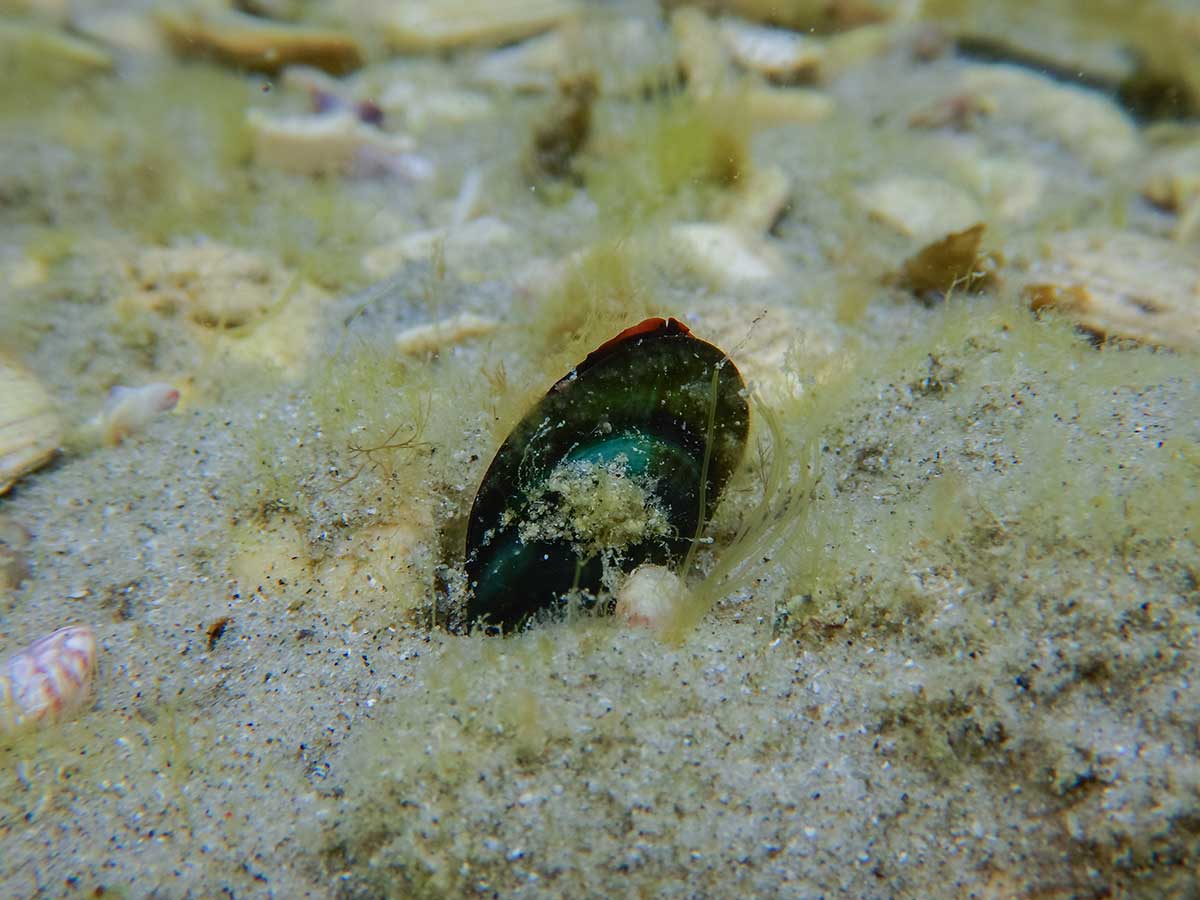
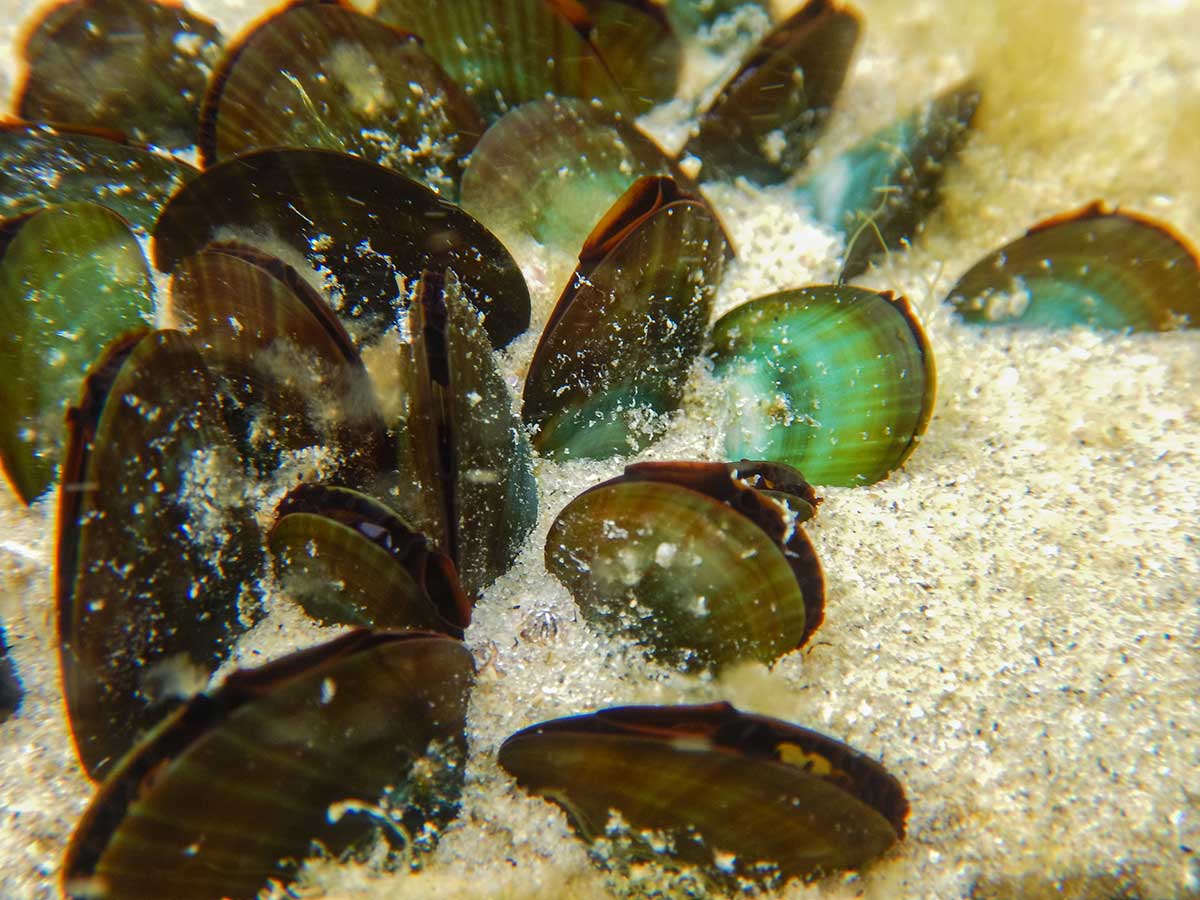
It seems the cockle and pipi shells have created a firm substrate for the juvenile mussels to attach to. Is this how the bed started of? No hydroids or red filamentous algae to attach to, just green algae and shell? If so this is a recipe worth exploring for aided restoration elsewhere in New Zealand. Local iwi (Patuharakeke Te Iwi Trust Board) have proposed a 2-year temporary closure to the take of all shellfish at Mair Bank and Marsden Bank, Whangarei.

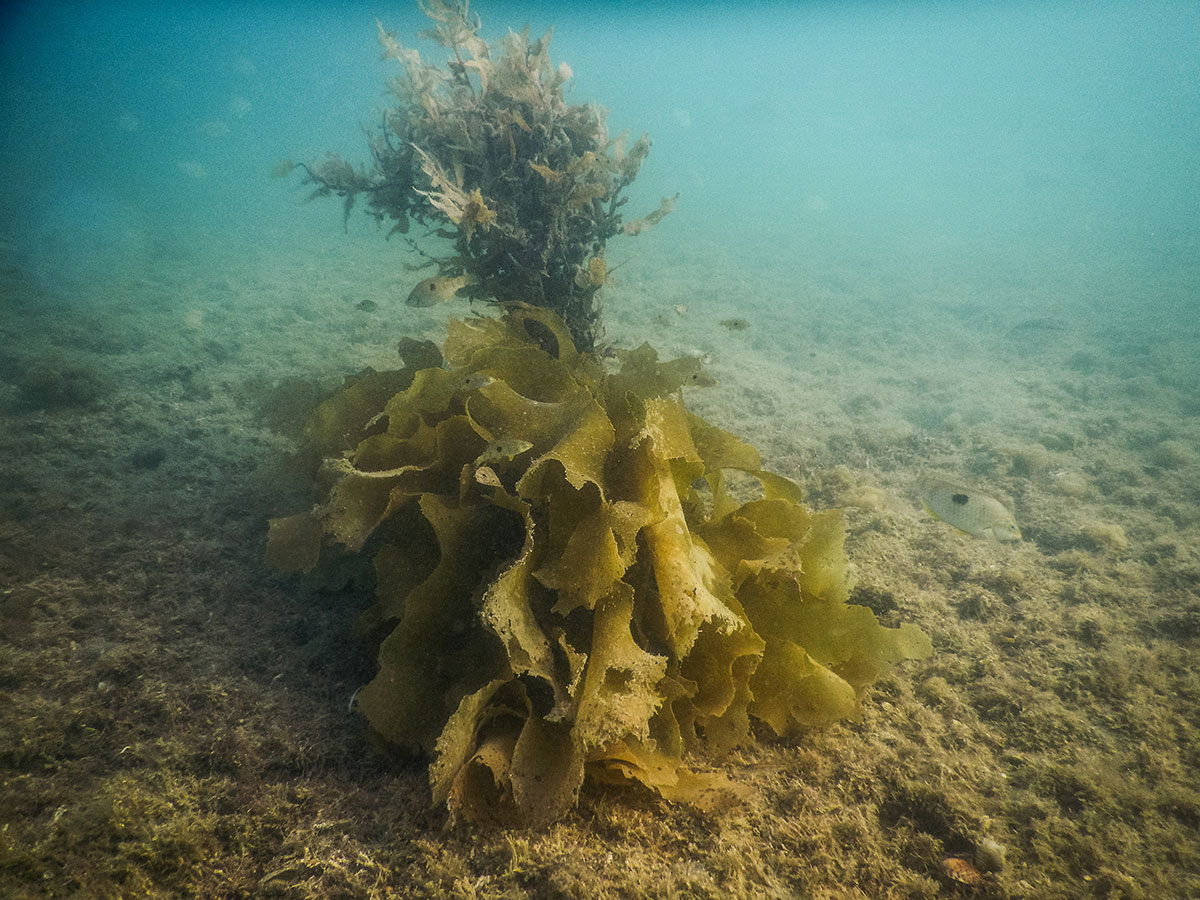
Note there was a large pipi & cockle die off on the shell bank where mussels appeared.
UPDATE: Nov 2017
There are isolated individuals ranging for a hundred meters or so west of the main bed. Most mussels were around 6-8cm long. I could not find blue mussels in the bed, I did however see fish eggs, octopus, crabs, evidence of fish feeding on the mussels, triplefins and many shorebirds enjoying the exposed reef. The mussels were also growing in smaller patches off the edge of the sand bank into the channel where I found the remnants in Dec 16.
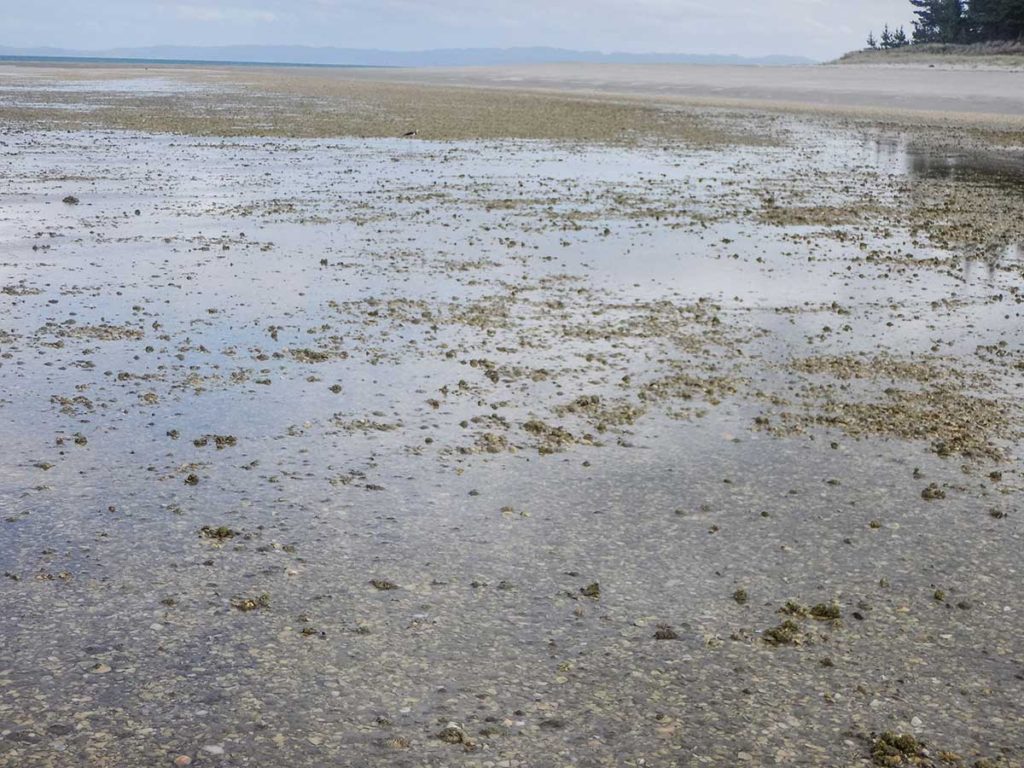
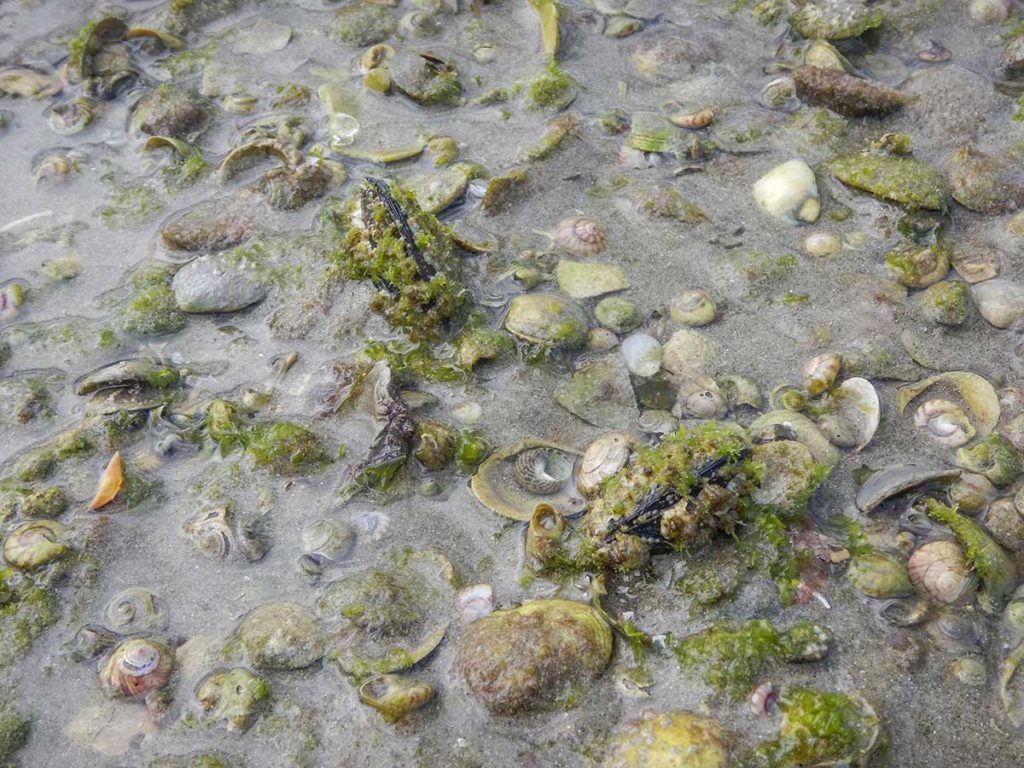
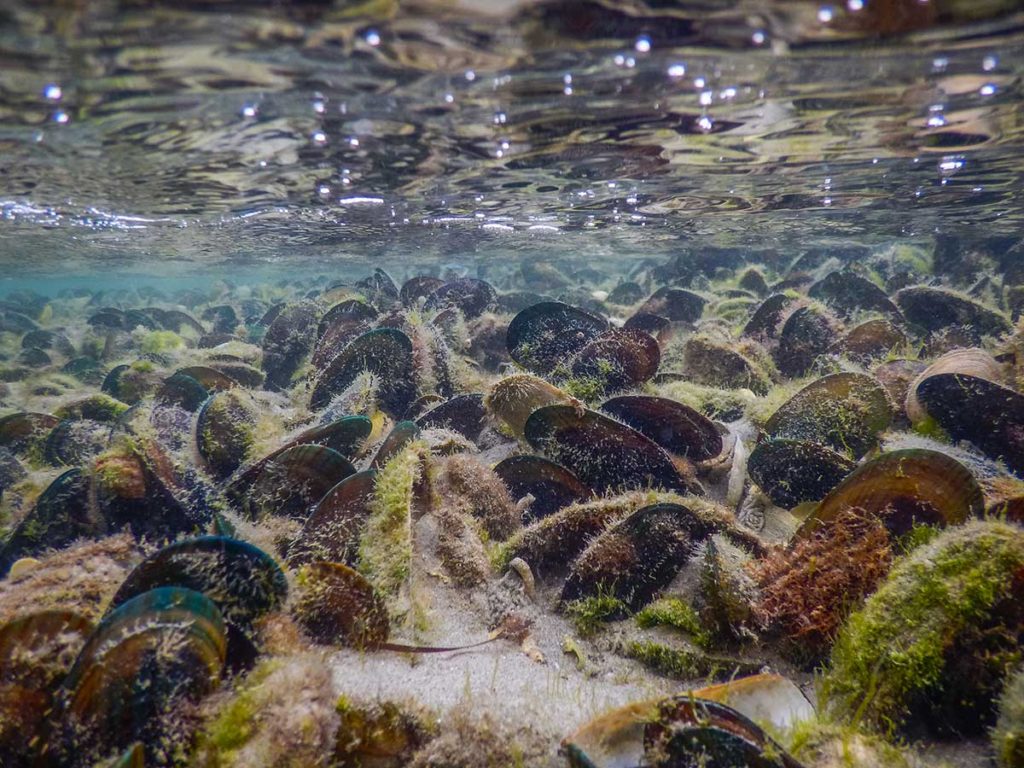
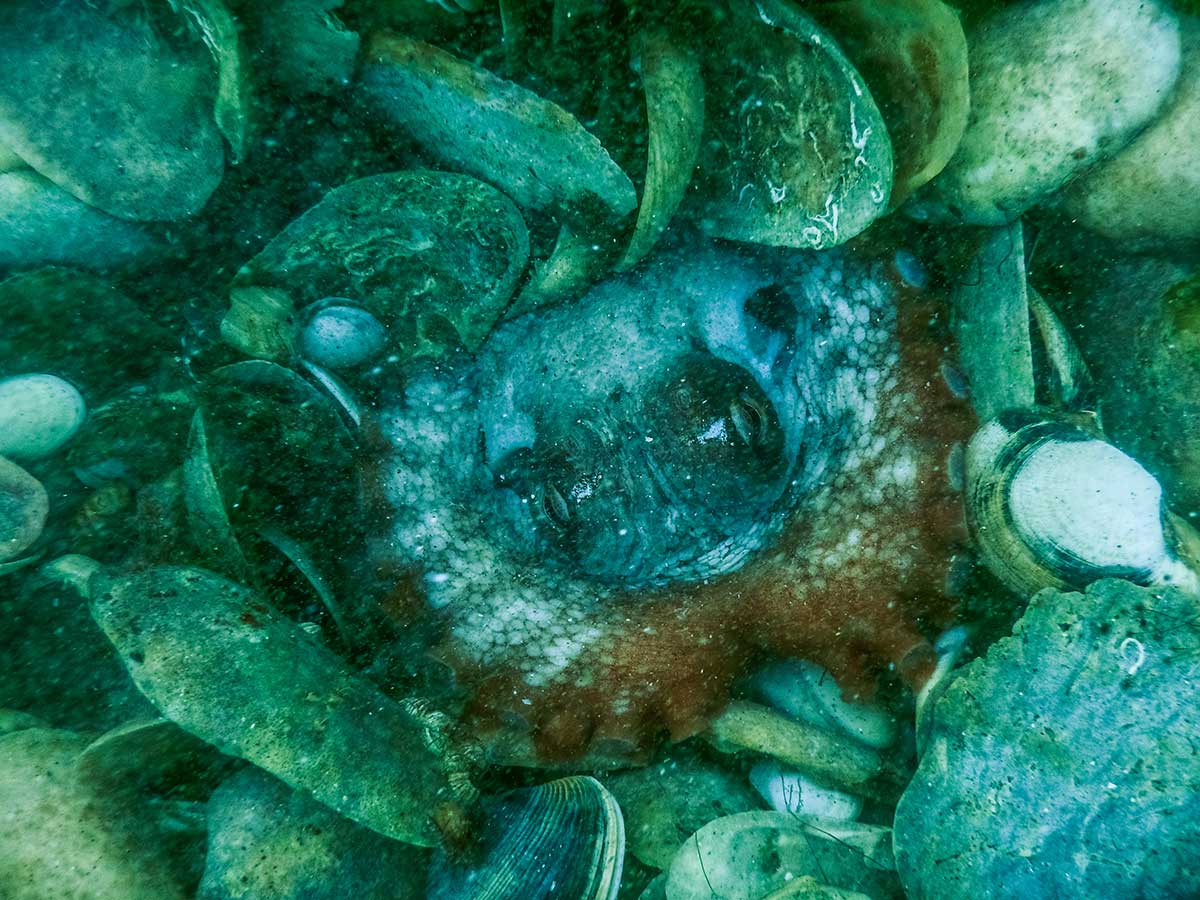
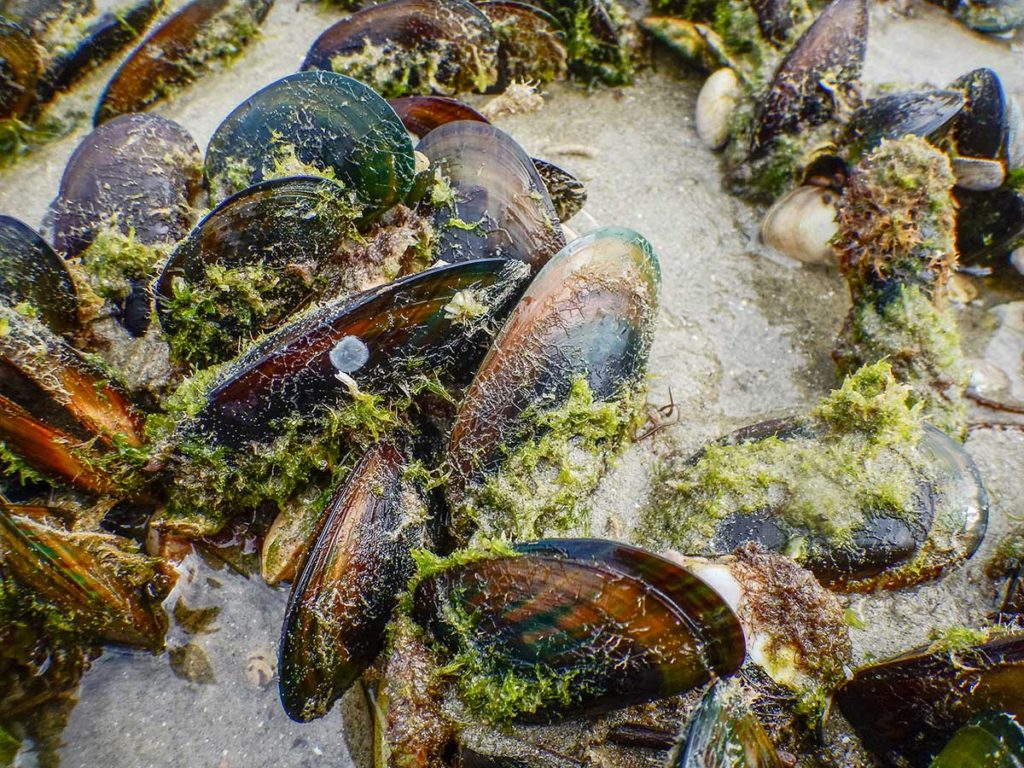
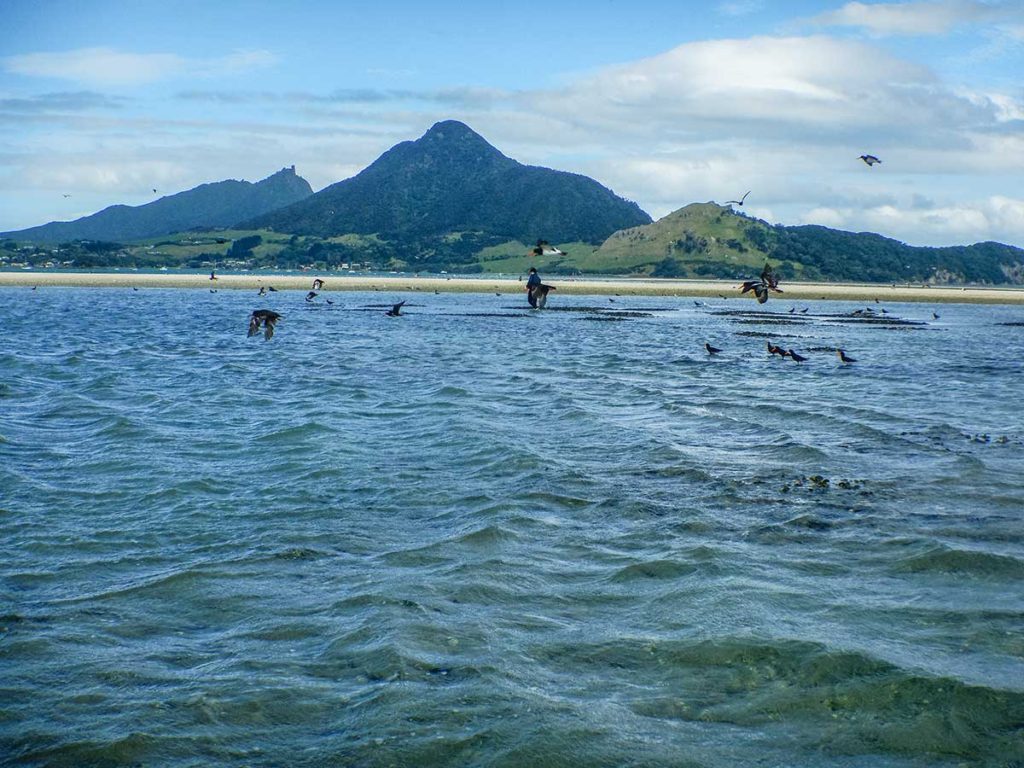
Hopefully this bed continues to regenerate despite the massive human harvesting effort. Identifying and protecting the seed stock would go a long way towards this.
The current here is very strong, here is a short video of 1,000s of young pipi swept in current. They seem to be regenerating.
UPDATE: Jan 2018
Two insights after talking to locals.
- Mair Bank was once covered in a thick carpet of large mussels with live pipi underneath.
- In the late 1950s / early 1960s (1963?) there was a commercial operation that dredged the whole bank, taking out all the mussels.
- The pipi die off could have helped the mussel bed by providing a settlement substrate. The pipi could have consumed mussel spat that may have perviously tried to settle the bed.
Also the beds look choice at high tide, I saw sea hares and piper fish. Look how many species in this photo:
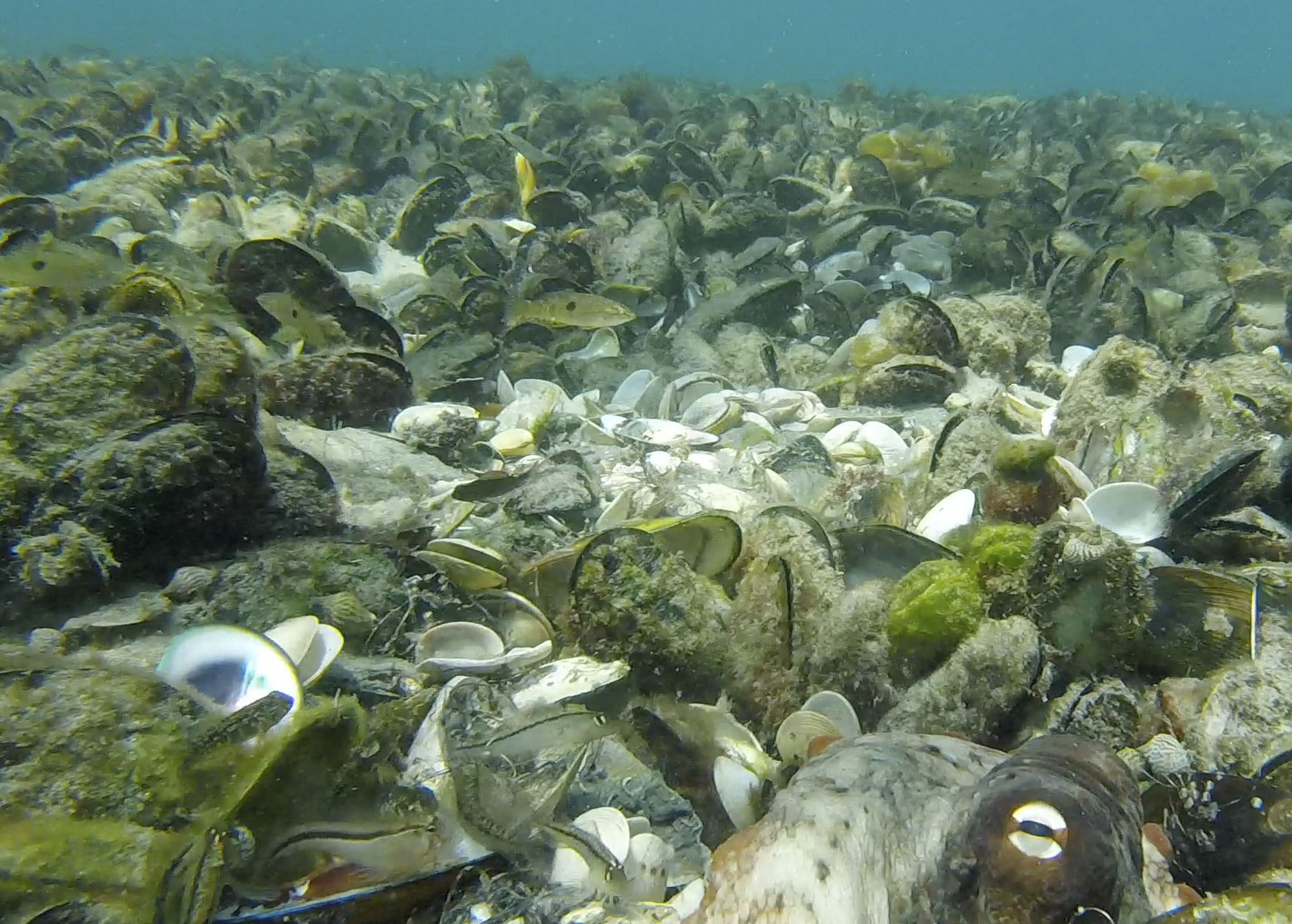
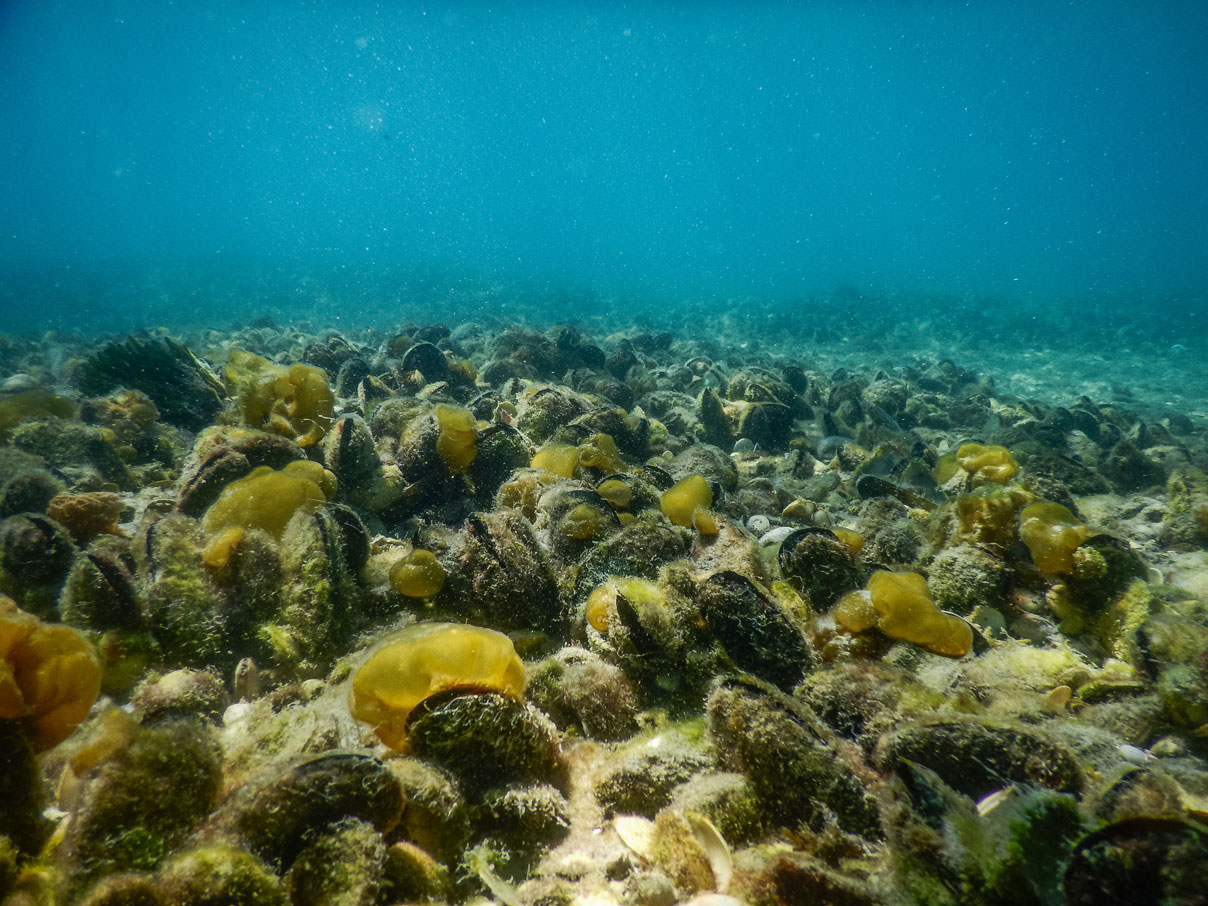
UPDATE: Feb 2018
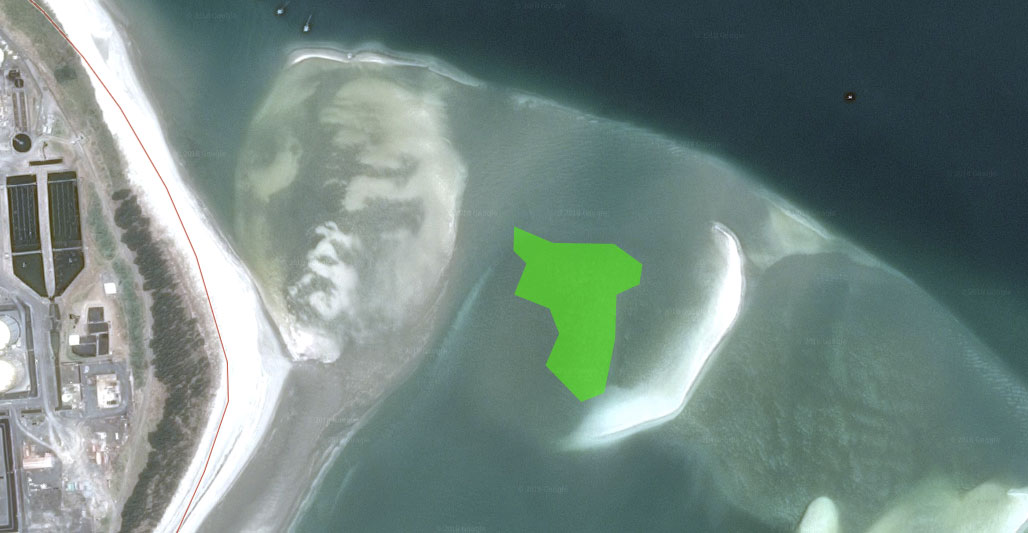
I managed to track down a report which mapped the bed in Feb 2016. They worked out that the mussel bed then covered an area of approximately 12,800m2 and had an average coverage 38.3%.
UPDATE: Jul 2020
Conditions were rubbish but I had a good look around and could not find the mussel beds. I could not see any mussel shells so I assume the mussels were taken by humans and the rahui on all shellfish in the area was not strong enough protection. The Northland Regional Council could now look at protection measures given the Motiti decision.
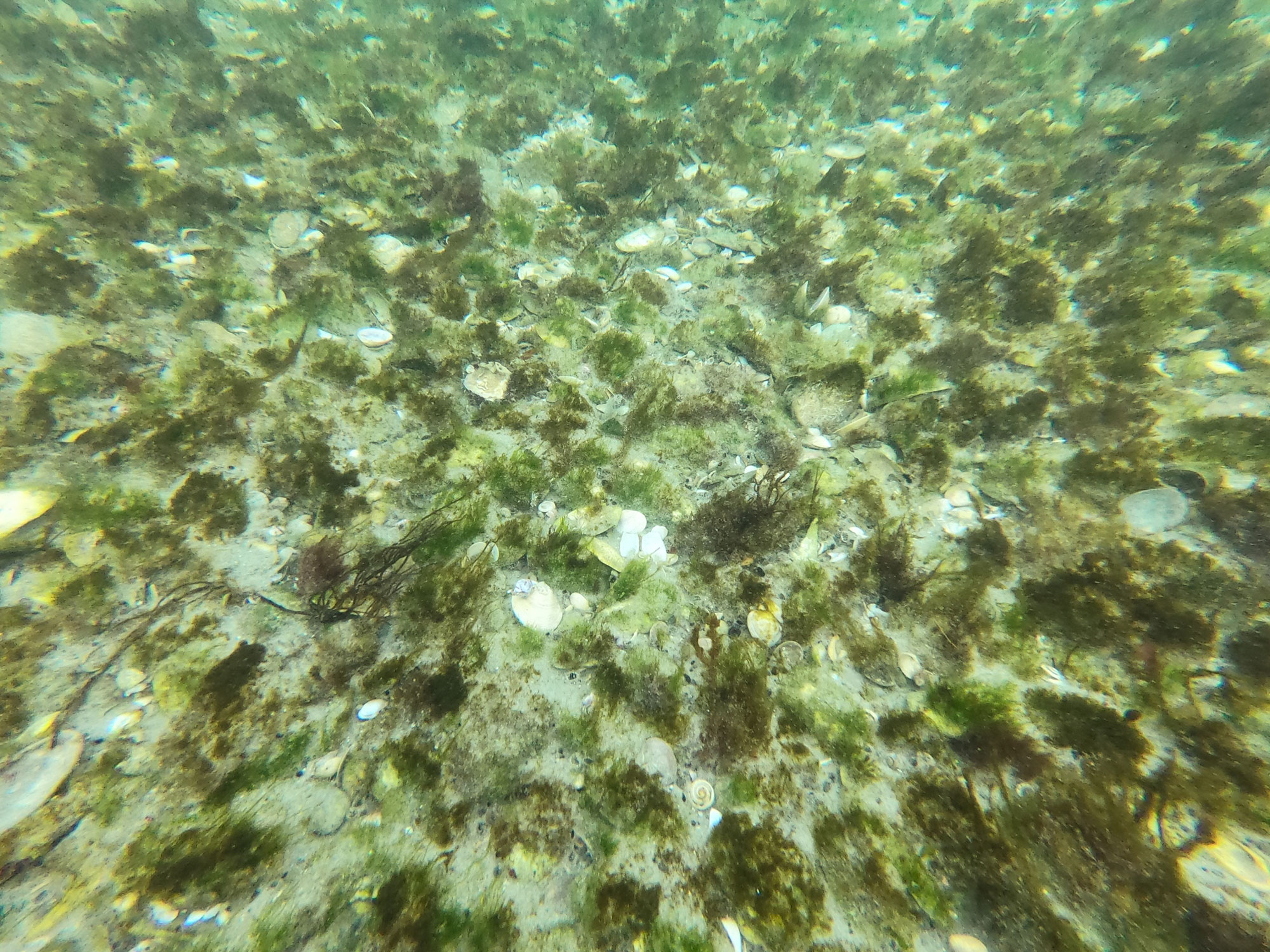
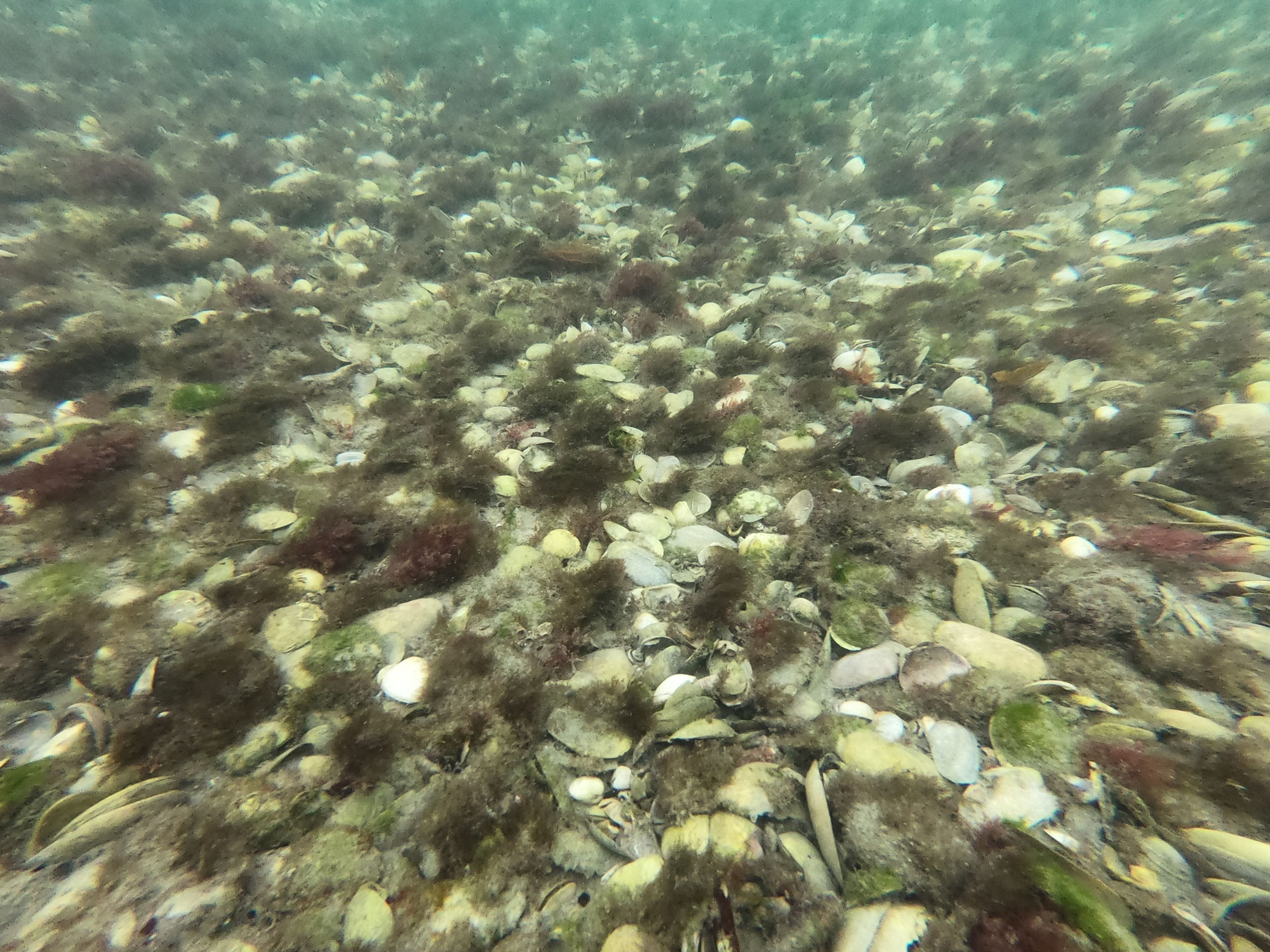
There is a lot of algae on the shellbanks which could help the beds return as it is important for the initial recruitment phase for several species of shellfish. We need to find the original adult mussel bed that seeded this bed and protect it so it does not disappear like this one.
Evasive weeds
One of the hardest aspects of restoring and maintaining native habitat is weed control. Cliff faces are the most expensive often requiring carrying heavy loads to remote places and abseiling or a helicopter. Today I watched as DOC, Motuihe Trust and Yamaha trailed spraying pampas from an unmanned helicopter. The RMAX helicopters are piloted by remote control and used in a wide range of industrial and research applications overseas. The trial was a success and the team have plans to further improve the precision of the technology.
Fire on Browns Island
Just after the fire was put out on Browns Island I kayaked over to check on the shorebirds. I went for a short walk and was quite upset by the damage done to the reptiles.
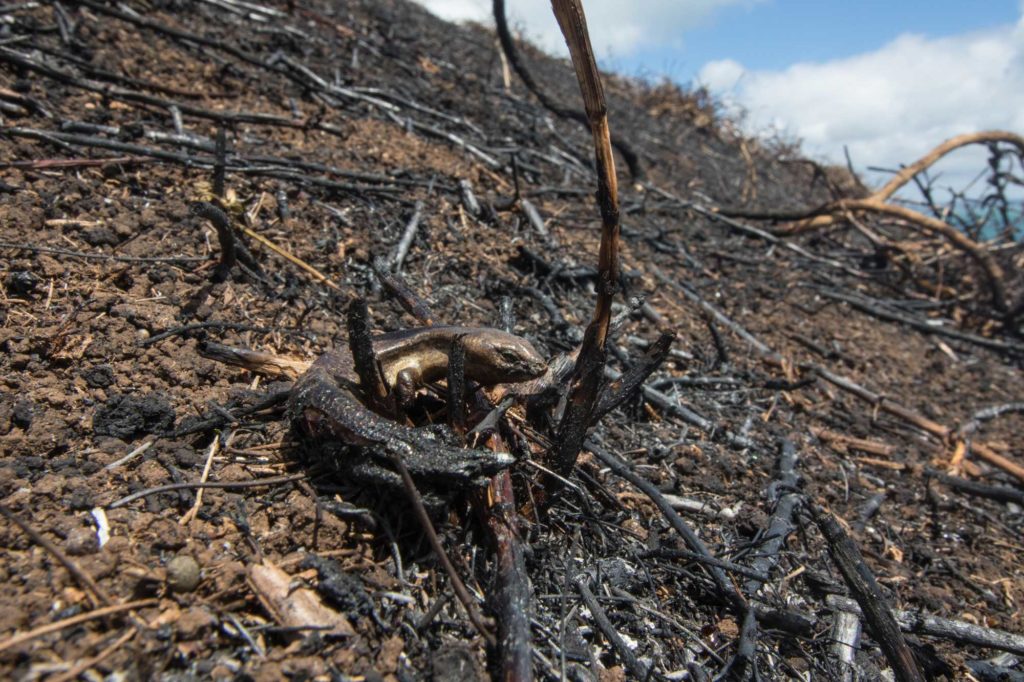
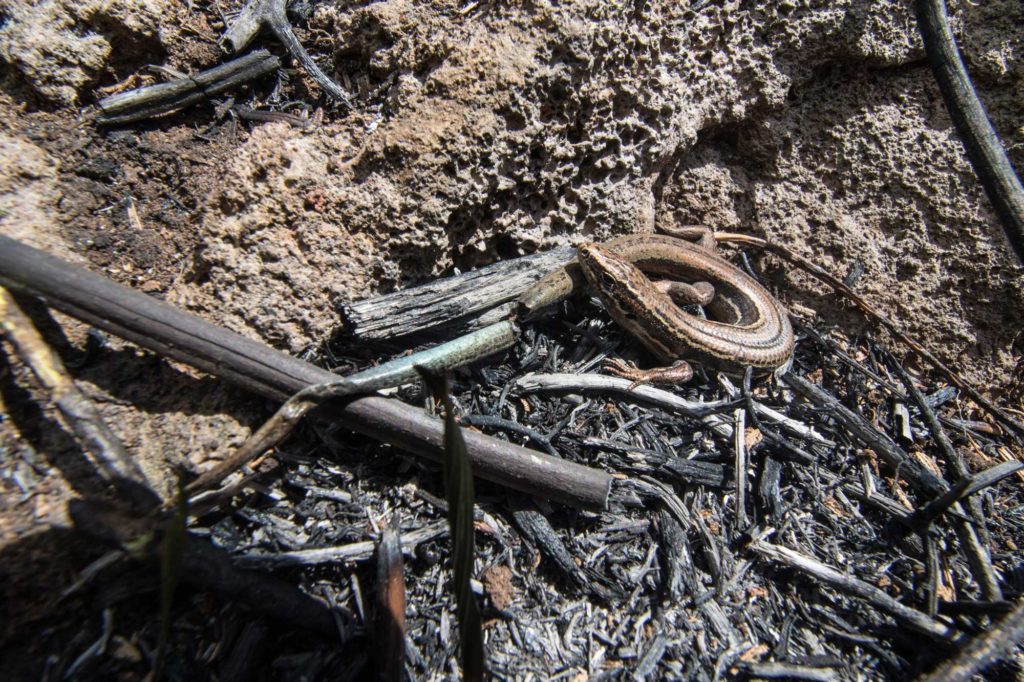
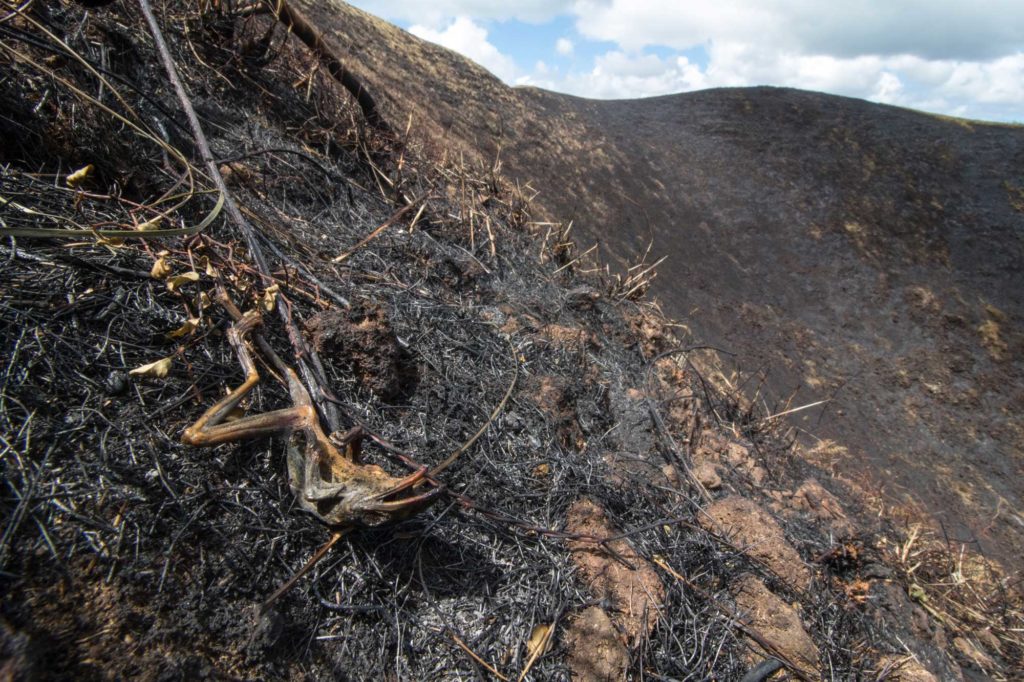
The rest of my photos here. Hopefully some good comes out of it.
UPDATE 30 DECEMBER 2016:
Six weeks later the grass has largely rejuvenated, however without the smothering grass, many seeds that lay dormant in the soil have germinated. Most of the new arrivals are invasive weeds, I saw wooly nightshade, apple of Sodom boneseed and moth plant. However the center of the crater is more interesting. From under the rocks bracken has emerged (how long could it have waited there?) and I think the reptiles will enjoy the extra cover.
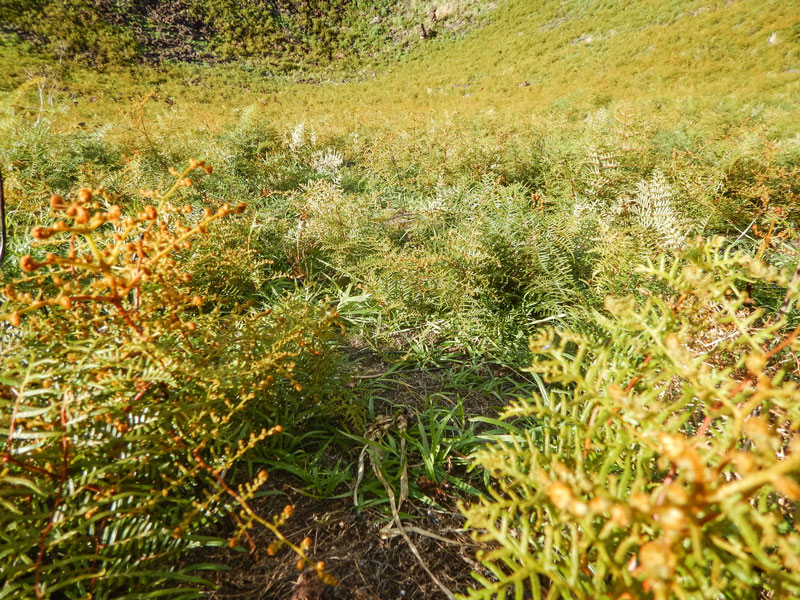
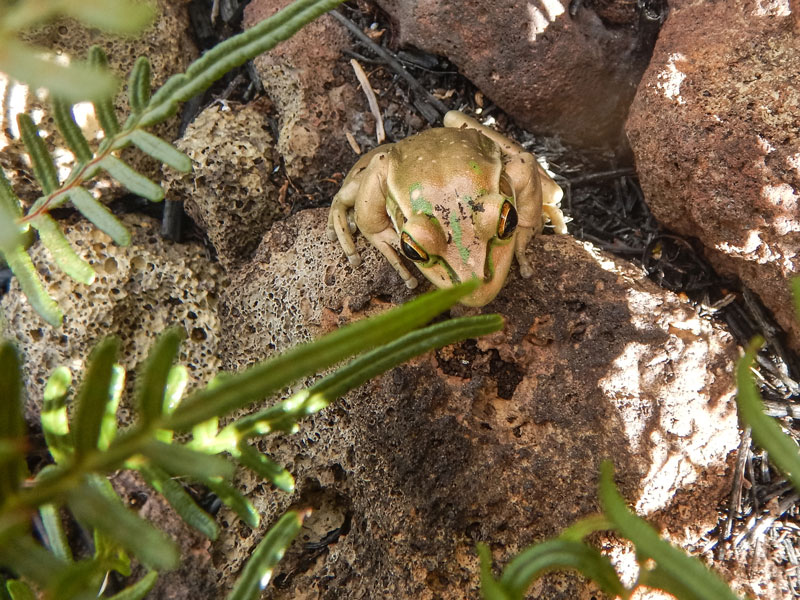
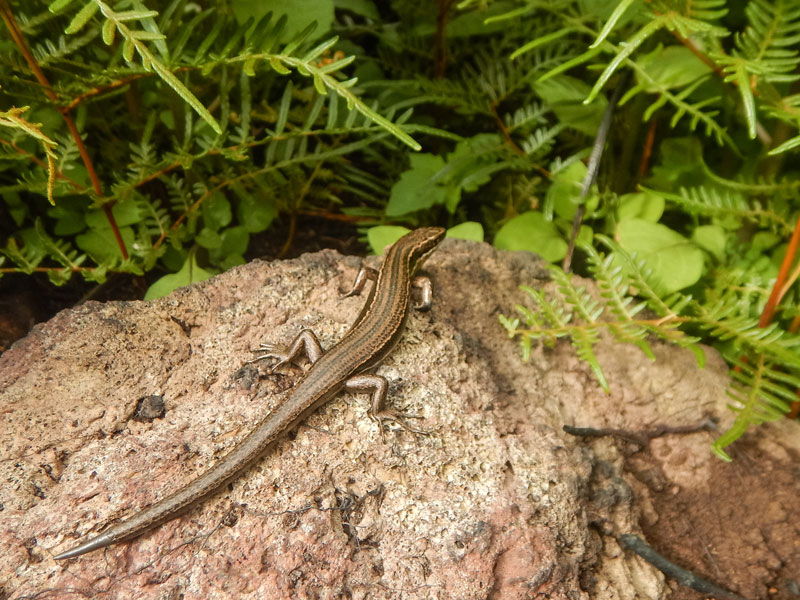
Swimmable
Pure New Zealand
I love James Cameron’s 2010 TED talk which has been used in the latest 100% Pure New Zealand campaign.
Like Cameron, I too grew up reading and drawing science fiction and exploring nature. This year my ‘journey of discovery’ took me deep into the Waitakeres for my own Avatar experience.
![]()
There, in the moonlight, I crouched in the middle of a small stream prodding and splashing away like a child. Like Jake Sully I was enchanted with tiny animals that (unlike glowworms who glow for hours) release a bright burst of bioluminescence. The limpets I was teasing are called Latia and they release bioluminescent slime as a defensive mechanism.
You won’t find these alien limpets anywhere else in the world and you also will no longer find them in most New Zealand streams. They need clean water, and we have filled our lakes and rivers with too much sediment for them to survive. Our waterways are far from 100% pure. Most of the rivers that are pristine are high in the South Island where it is too cold for Latia to survive.
Our government wants to treat our streams and rivers like drains. The legislation they have proposed sets extremely low standards for our waterways. I agree with the Parliamentary Commissioner for the Environment – sediment is one of the three big issues affecting our waterways. Yet our Government has not included sediment as an attribute in the National Policy Statement for Freshwater Management, and we can’t manage that which we do not measure.
In the 100% Pure ad James Cameron tells us that ‘curiosity is the most powerful thing we own’. My curiosity has changed the way I see the New Zealand environment. It has altered my enjoyment of the New Zealand wilderness. Where before I just saw bush, now see invasive plants. Having heard the morning chorus in our wildlife sanctuaries I am let down by our silent mainland forests.
So a few years ago I started a personal project about the positive stuff – the things that make New Zealand unique. MostNZ.com is a website showcasing what we can celebrate about New Zealand, how to experience those things and most importantly how to keep them. It’s a lot more honest than the 100% campaign but it’s still advertises New Zealand.
We can grow tourism and the economy by growing, protecting and restoring our wilderness. But to do it we need more, James Cameron; more curiosity, more imagination, more vision.
Let’s at least try for 50% pure. Let’s focus on the quality not the quantity of our exports. Let’s start doing restoration at an industrial scale and let’s really invest in our scientists who dream of a predator free New Zealand.
Like the narrative arc of James Cameron’s blockbusters we have tasks to master, battles to win and transformations to witness. The New Zealand story must have our unique environment at its heart.
James Cameron ends his Ted Talk with ‘‘No important endeavour that required innovation was done without risk.” – “Failure is an option, but fear is not.”
MOST New Zealand
I have been working on this project for the last few years.
It has been a lot of fun to make, the video work was challenging but also the most rewarding. There are 20 pages with an additional 11 fun facts, but there are so many more I want to add. Most of them involve going to remote locations and sitting quietly for a long time, so I have done the easier ones first. If the site proves popular I will add more pages. I wish it did not have ads but if the site makes money then I can easier justify working on it more.
My hope is that New Zealanders who experience the site better understand how special the New Zealand environment is and thereby value it more. If it proves popular the site may increase domestic and international tourism to wildlife destinations. I think this would be a good thing because growing our economy via tourism means better protection and investment in our natural assets. Where as growing our economy via primary industries means more industrial scale environmental degradation.
I think my favourite fact is probably the one with the worst video New Zealand has the most nosy bird was so much fun to shoot. I spent a few nights wondering around looking for kiwi after helping with the kiwi monitoring count at Tawharanui regional park. I had never before seen kiwi in the wild and given its slow metabolism and the cold night I was expecting a quiet, slow and shy bird. But were so fast – hooting off through the bush if I surprised them and so noisy – snorting away like pigs! I hope I get to spend lots more time in the wilderness with these birds and all the other creatures I captured on camera.
Hauraki Gulf Poster Series 2016



Stoked to have helped out with these posters which will go in every NZ Herald for 3 days running. Dave Gunson ( the illustrator ) is amazing. The messages ( especially the Goat Island one ) are really important.
Bioluminescent limpets
Last night I found myself standing in the middle of a bubbling bush clad stream. The full moon danced on the water, I turned my headlamp off and suddenly the stream banks came to life with glow worms. But the best bit was when I looked back down at where I had been walking. You see I had heard this was a great place to see the only bioluminescent limpets in the world. I was blown away by how bright they were, when disturbed the limpets release a bright green slime – so my footprints were lit up like a Michael Jackson video. My wonder was not displaced by my guilt for disturbing them and I proceeded to disturb more in order to document the behaviour (sorry guys). We need stronger bottom lines for fresh water quality if we are to keep wonderfull little creatures like these for future generations.
